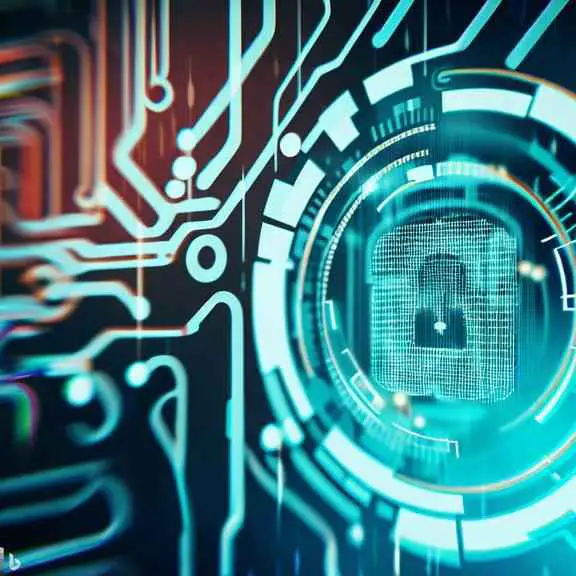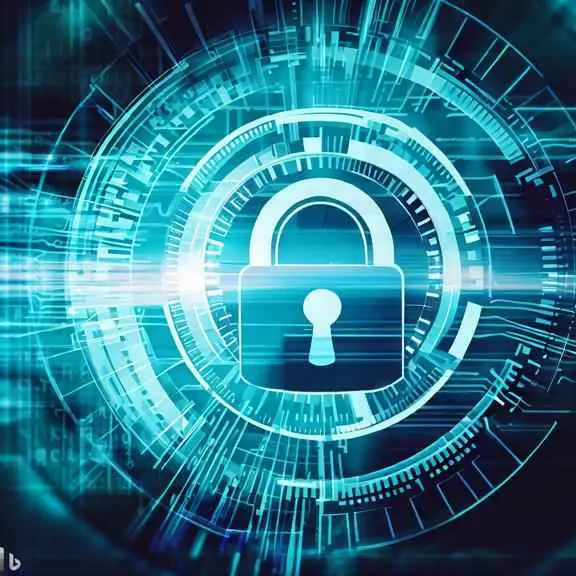Paragraph on
Cyber Crime
for all Class, Words
by Psychology on
In today’s digital age, the advent of technology has brought about many benefits to society. However, the increased use of technology has…, please continue reading.

Table of Content
Ad
The Paragraph on Cyber Crime
Ad

Questions about Cyber Crime
Ad
In today’s digital age, the advent of technology has brought about many benefits to society. However, the increased use of technology has also led to the rise of cyber crime. Cyber crime refers to any activity that involves the use of a computer or network to commit a criminal offense. Examples of cyber crime include hacking, phishing, identity theft, and cyberbullying. One of the most significant threats posed by cyber crime is the potential to compromise personal and financial information. Individuals and organizations are at risk, with the potential for financial loss, damage to reputation, and even physical harm. Unfortunately, cyber criminals are becoming more sophisticated, and many are difficult to trace or apprehend. As a result, it is crucial to take measures to protect oneself from cyber crime. This can include using strong passwords, being cautious when opening emails from unknown senders, avoiding public Wi-Fi networks, and keeping software and security systems up to date. By following these best practices, individuals and organizations can reduce the risk of falling victim to cyber crime.
- What is cyber crime?
- Cyber crime is any activity that involves the use of a computer or network to commit a criminal offense.
- What are some types of cyber crime?
- Examples of cyber crime include hacking, phishing, identity theft, and cyberbullying.
- What is the most significant threat posed by cyber crime?
- The potential to compromise personal and financial information.
- Who is at risk of falling victim to cyber crime?
- Individuals and organizations.
- What are some potential consequences of falling victim to cyber crime?
- Financial loss, damage to reputation, and even physical harm.
- Are cyber criminals becoming more or less sophisticated?
- More sophisticated.
- What can individuals do to protect themselves from cyber crime?
- Use strong passwords, be cautious when opening emails from unknown senders, avoid public Wi-Fi networks, and keep software and security systems up to date.
- What are some best practices for organizations to prevent cyber crime?
- Enforce security policies, provide employee training on cyber security, perform regular security audits, and conduct regular backups of important data.
- What are some possible consequences for cyber criminals if caught?
- Imprisonment, fines, and restitution.
- How can society as a whole work to prevent cyber crime?
- Increase public awareness and education on cyber security best practices, invest in advanced security technologies, and collaborate with law enforcement agencies to bring cyber criminals to justice.

Vocabulary related to Cyber Crime
Ad
Vocabulary words:
- Hacking (noun) - the gaining of unauthorized access to data in a system or computer; usage - A hacker broke into the company’s database and stole customer information. Synonyms - intrusion, breach. Antonyms - authorization, permission.
- Phishing (verb) - the fraudulent practice of sending emails purporting to be from reputable companies to induce individuals to reveal personal information; usage - He fell victim to a phishing scam and unknowingly provided his credit card information to cyber criminals. Synonyms - scamming, conning. Antonyms - honesty, genuineness.
- Identity theft (noun) - the fraudulent acquisition and use of a person’s private identifying information; usage - After her identity was stolen, she spent months trying to repair the damage done to her credit score. Synonyms - impersonation, fraud. Antonyms - honesty, trustworthiness.
- Cyberbullying (noun) - the use of electronic communication to bully a person, typically by sending messages of an intimidating or threatening nature; usage - The school implemented policies to combat cyberbullying among students. Synonyms - harassment, intimidation. Antonyms - kindness, respect.
- Financial loss (noun) - a decrease in an individual or organization’s monetary resources; usage - The company experienced significant financial loss after a cyber attack compromised their financial information. Synonyms - deficit, debt. Antonyms - profit, gain.
- Reputation (noun) - the beliefs or opinions that are generally held about someone or something; usage - The scandal tarnished the politician’s reputation and led to a decrease in public trust. Synonyms - standing, image. Antonyms - disgrace, dishonor.
- Sophisticated (adjective) - knowledgeable and refined; usage - The cyber criminal’s sophisticated techniques made it difficult for law enforcement to apprehend him. Synonyms - advanced, complex. Antonyms - primitive, unsophisticated.
- Trace (verb) - to find or discover by investigation; usage - The IT team was able to trace the hacker’s location and provide the information to law enforcement. Synonyms - locate, track. Antonyms - lose, misplace.
- Apprehend (verb) - to arrest or take into custody; usage - The police were able to apprehend the suspect after an extensive investigation. Synonyms - capture, seize. Antonyms - release, free.
- Best practices (noun) - methods or techniques that have been proven to be effective or successful; usage - The organization developed a set of best practices to improve their cyber security measures. Synonyms - standards, models. Antonyms - poor practices, ineffective methods.

Structure of the sample "Cyber Crime" paragraph
Ad
Cohesion and coherence is established in the paragraph through the use of transitional words and phrases such as “however,” “unfortunately,” “as a result,” and “by following these best practices.” These signals help to connect ideas and show the relationships between them. In addition, the organization of the paragraph follows a logical sequence, starting with an introduction to the topic and ending with recommendations for prevention. This structure enhances the clarity and flow of the paragraph, making it easy for the reader to follow and understand the information presented.
